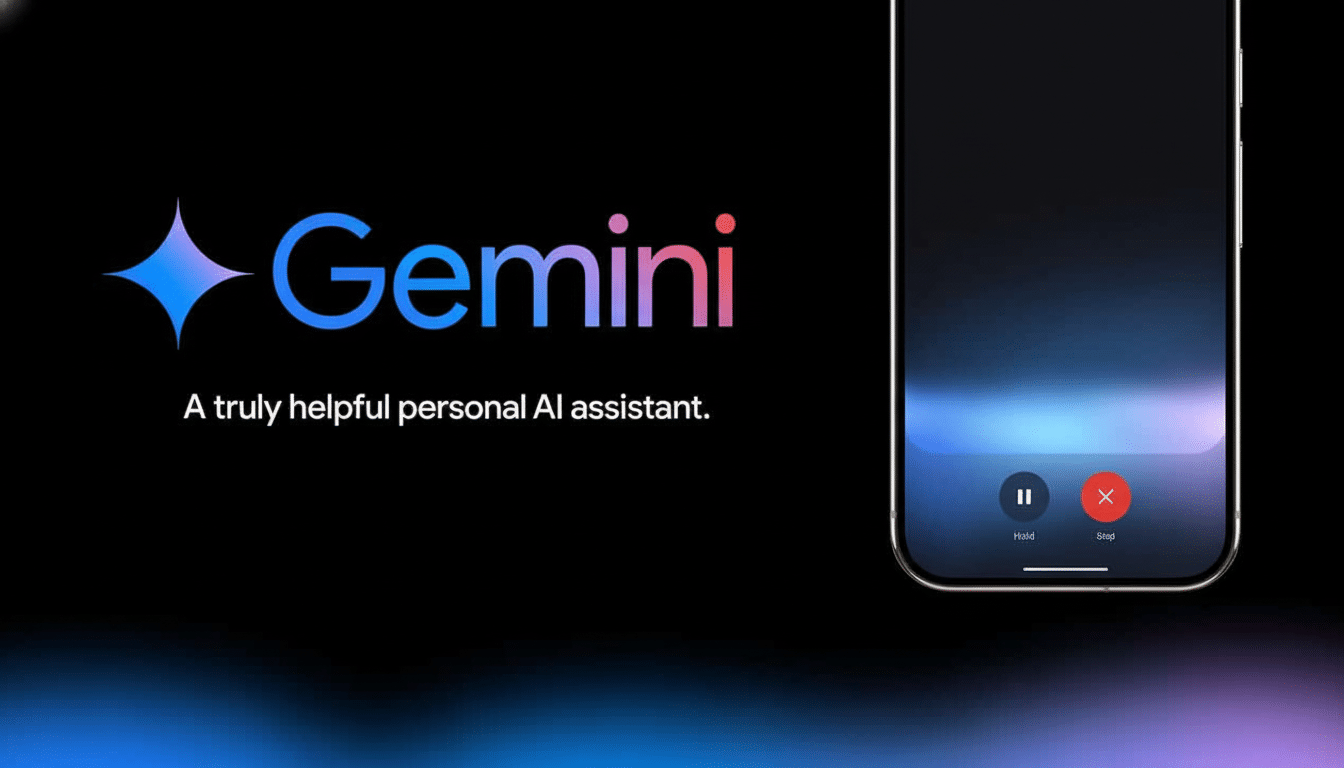General Motors plans to launch a conversational assistant powered by Google’s Gemini, injecting natural-language smarts into navigation, communication, and vehicle features across brands including Buick, Chevrolet, Cadillac, and GMC.
The company presents it as a consumer-facing capstone of its software-defined vehicle strategy, which will build on top of its Google Built-in infotainment stack and OnStar services.

What the Gemini Assistant Will Do in GM Vehicles
GM says the assistant will speak in everyday language and sift through multi-step tasks drivers usually juggle from one app to another. Think:
- Plan a route with a fast charger and a coffee stop.
- Send an ETA to contacts with arrival time and suggest when to leave if timing changes.
- Check into your contacts or calendar data.
- Automatically map the last person you were scheduled to see and how long it will take to get there given current traffic conditions.
- Trigger climate settings by voice.
Some leading automotive companies are investigating custom commands that can facilitate various driving preferences. It will also be able to answer broad questions by tapping into the web, if and when applicable, but stay focused on core driving and vehicle-support tasks.
The carmaker is describing the experience as a productivity tool and a car-savvy guide. Look for explanations of features like one-pedal driving, personalized servicing reminders based on vehicle issues, and context-aware recommendations such as preconditioning the cabin or battery before visiting a charging station in an EV. The system is an extension of previous work that sent non-emergency OnStar requests through Google Cloud’s Dialogflow to provide faster, more accurate results.
Availability comes through over-the-air software updates delivered via the Play Store for supported OnStar-enabled cars. GM says many current owners—not just new-model buyers—will get access, a significant widening of its connected-services reach without a visit to the dealership.
How It Really Works Inside GM Vehicles and Cloud
The generative potential of Gemini will be customized to the vehicle domain, where cloud inference is deployed for complex queries and on-vehicle computations are used for latency-sensitive controls. GM execs describe their “train-and-distill” approach: use a state-of-the-art foundation model, refine it on automotive-specific data and owner manuals, then optimize the components to run well inside the car’s compute stack. This design is meant to keep voice interactions snappy even in the face of spotty connectivity.
This assistant rides on top of Google Built-in and OnStar, which allows it to interact with navigation, media, communications, and some vehicle systems. It’s also a first move toward a wider, brand-owned AI layer that GM says might one day fold in several foundation models. Company leaders have said they will consider offerings from companies like OpenAI and Anthropic, for instance, to ensure quality while also keeping costs down.

Privacy Controls And How Your Data Is Used
GM stresses that owners will decide what the assistant has access to, and can learn from, with clear opt-in and opt-out controls. The company says it won’t sell data collected to improve the experience for unrelated revenue. That position also came after broader auto industry criticism over how it deals with connected-car data, and reports that driving and location information has been shared with data brokers and insurers. Consumer advocates and regulators, including the California Privacy Protection Agency and the FTC, have cautioned automakers to bake consent and data minimization into default designs.
On the trust front, GM cites newly established governance processes, strengthened retention policies, as well as a privacy-by-design review for features that make contact with sensitive data. The assistant’s modular architecture also constrains which commands can impact safety-critical systems, a guardrail designed to mitigate risk from AI misunderstandings or “hallucinations.”
Why Automakers Are Racing To Include Generative AI
Drivers have long grappled with awkward in-car voice controls. J.D. Power surveys repeatedly find built-in voice recognition as one of the most troublesome features, and S&P Global Mobility has said that many drivers prefer smartphone assistants to native equivalents. This is what generative AI promises: more flexible language understanding, better follow-up questions, and faster task completion—which matter for safety and convenience. Research from AAA has also found voice-first interactions reduce the time drivers take their eyes off the road versus a system controlled by touch, but the system (in this case, navigation) must be accurate and respond quickly.
GM is not alone. Mercedes has steered a ChatGPT-powered assistant, Stellantis has worked with Mistral across its marques, Tesla has tapped xAI for vehicle inquiries, and Volkswagen has demonstrated integrations driven by Cerence and OpenAI. The strategic overlay is obvious: automakers view AI assistants as conduits to the recurring software revenue and stickier customer relationships they believe will underpin their future business. McKinsey estimates in-vehicle software and services will become a multi-hundred-billion-dollar market by the end of this decade, with voice interfaces being the front door.
What to Watch as GM Unveils Its Gemini Assistant
Three things will decide whether the assistant is a novelty or indispensable:
- Real-world reliability—noisy cabin, bad connection, unfamiliar accent—must match or exceed that of the smartphone benchmarks.
- Safety and scope: drivers need clear guardrails on what the AI can handle and transparent handoffs to human OnStar advisors for complex or emergency situations.
- Privacy and personalization: a clear expression of consent, easy data controls, and tangible benefits from opting in will define the pace of adoption and trust.
If GM does succeed on those scores, Gemini could change the way owners engage with their vehicles—from tapping an icon and scrolling through menus to something simpler: they need only ask for it.
For an industry in a hurry to pivot vehicles from machines into software platforms, it’s not just a convenience feature; it’s the user interface for the next era of the connected car.

